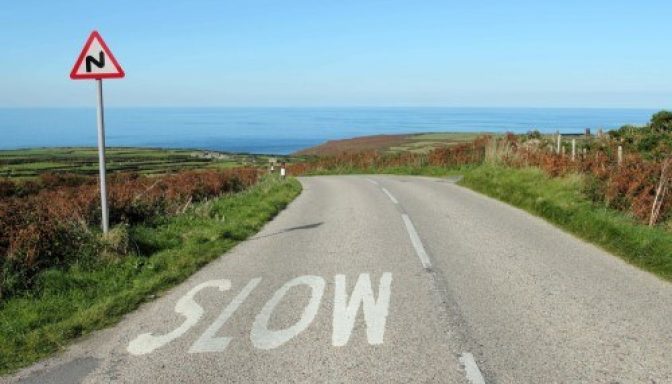We often see speeding tackled in an urban setting. More and more local authorities are putting in place 20mph limits on residential streets in recognition that spaces where people socialise, children play, and families walk to school, must be places where motor vehicles travel slowly.
Urban vs. Rural
In the Highway Code consultation on changes to the code around vulnerable road users, we are now seeing the proposal to include references to 20mph and 50mph in urban and rural settings respectively. These have not been included in previous versions of the Highway Code but are necessary now because more local authorities are implementing areas with slower speeds for safety reasons.
This is progress but there is a long way to go. 50mph is not an appropriate speed on roads in which people walking and cycling interact with motor vehicles.
All road casualties are a tragedy but we see a disproportionate amount of them on our rural roads. 55% of fatalities, but only 31% of cycle traffic, takes place on rural roads [1].
Rural roads have a much higher average speed than urban roads. They tend to be narrower and often have more blind spots and all this makes fatalities more likely. In fact, you are 2.7 times more likely to die while cycling per mile travelled on a rural road than an urban one [2].
Most of these deaths occur when a motor vehicle hits a cycle: 92% of all reported cyclist casualties and three quarters of deaths involve a collision between a cycle and one motor vehicle [3]. There are a number of ways to try and reduce the number of deaths but arguably the most effective action is to separate vulnerable road users onto off-road routes wherever possible, and to reduce speeds when it is not possible.
Solutions
At Sustrans we would like to see reduced speeds on rural roads that interact with the National Cycle Network or any rural roads where there is a high footfall of people walking or cycling. A lot of these roads are very narrow and slower speeds would allow people walking, cycling, horse-riding and driving to interact in a safer way.
This is particularly important for rural communities that often have poorer public transport links and fewer pavements making them more car dependent. If we are serious about getting more people walking and cycling to tackle physical inactivity, climate change and improve air quality then we need to create safer spaces for them to travel actively. This can be partly reached by working with land owners to create off-road routes but we also need speeds reduced to appropriate levels particularly where footpaths or byways cross roads and especially where they run along them for stretches.
Speeding has always been a contentious issue but we need Government and local authorities to continue to make changes to introduce appropriate speeds in areas where people interact with motorised vehicles whether that be in an urban or rural environment.
References
[1] https://assets.publishing.service.gov.uk/government/uploads/system/uploads/attachment_data/file/686969/pedal-cycle-factsheet-2017.pdf
[2] ibid
[3] ibid
Rachel White
Head of public affairs at Sustrans

